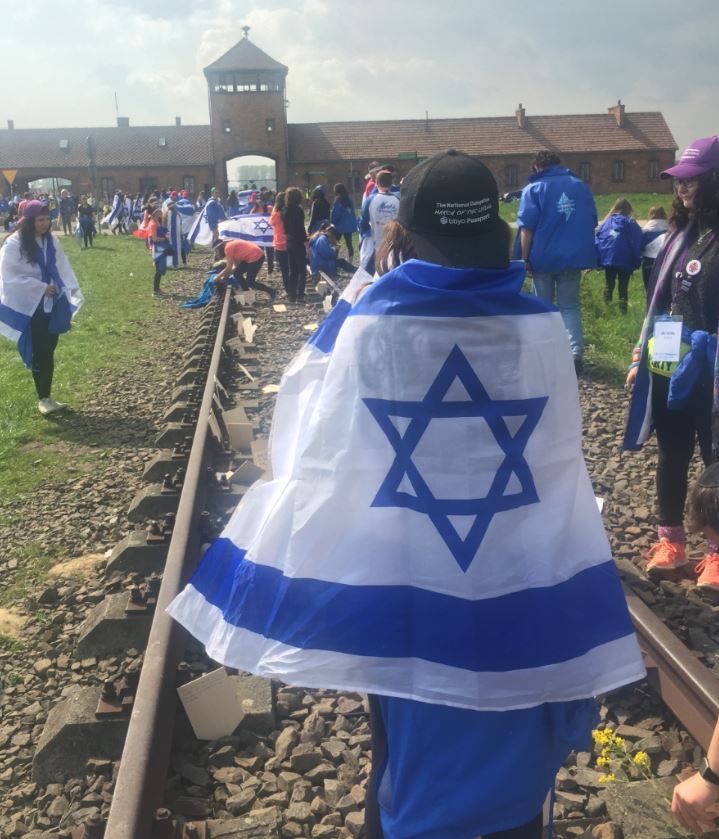
March of the Living 2016
As I glanced up at the dark, stormy sky, there was only one thought going through my mind. Why? Why me? Why was I one of the lucky ones? Why were my people such a hated people? These were my thoughts as I walked through the gates of Auschwitz. Then as we walked through the gates of Birkenau, the sun shined on my face through the glaring darkness and I was overcome with a sense of pride. Pride, that a young Jewish woman from America, such as myself, could come back to such a horrendous place.
For the past two weeks, I've been apart of BBYO's delegation on the March of the Living. March of the Living is an annual educational program, which brings individuals from all over the world to Poland and Israel, in order to study the history of the Holocaust and to examine the roots of prejudice, intolerance and hate. Taking place annually on Yom HaShoah – Holocaust Remembrance Day – The March of the Living, a silent tribute to all the victims of the Holocaust, is a 3 km walk from Auschwitz to Birkenau.
While in Poland, I visited the ghettos of Krakow and Warsaw. In addition to the ghettos, I visited Auschwitz-Birkenau, Treblinka and Majdanek, which were all death camps used by the Nazis to eliminate the Jewish people. Walking through these camps is an experience unlike any other. Growing up, I've read books, heard stories and learned to never forget. Seeing this firsthand made me incredibly sad, yet quite proud - proud to have been able to come back to a place of death and destruction with the people that these camps were trying to eliminate.
And then there was Majdanek; perhaps the most meaningful and impactful moments of the entire trip happened here.
Majdanek was a concentration camp and forced labor camp that, for a short time, was also used as a death camp. It was located in a suburb just three miles from Lublin in Poland in the center of the General Government area. The camp covered 667 acres of land and was surrounded by an electrified barbed wire fence. Prisoners, 45,000 of whom stayed in dilapidated and unhealthy barracks, were constantly being watched by SS guards in over 19 watchtowers. During its existence, Majdanek had seven gas chambers, two wooden gallows, and two crematoriums. At the end of the former “black path” crematorium, there stood a gigantic, circular Mausoleum. Under the dome is a huge circular urn, which contains the ashes of the victims at Majdanek.
All of my previous Holocaust education and knowledge was now secondary. Before visiting Majdanek, I had never heard of this camp, let alone know that what I was about to see would shake me to my core. I looked up at that huge pile of ashes and all I could see was the dead bodies of my friends, family, and acquaintances. I sat there staring at this pile of ashes for 10 minutes, not moving an inch. “68,000 Jews brutally murdered for no apparent reason, just for being Jewish, just for thinking, and believing differently than everyone else. This is a visual representation of hatred, injustice and destruction.” This is when everything hit home. I felt a pit in my stomach as tears rolled down my face. However, as sad as this moment was, it created in me, a need and desire to change the world and educate those around me.
From this point forward, I felt changed; I gained a greater appreciation and connection for Judaism, and made me proud to bear the future of the Jewish people.